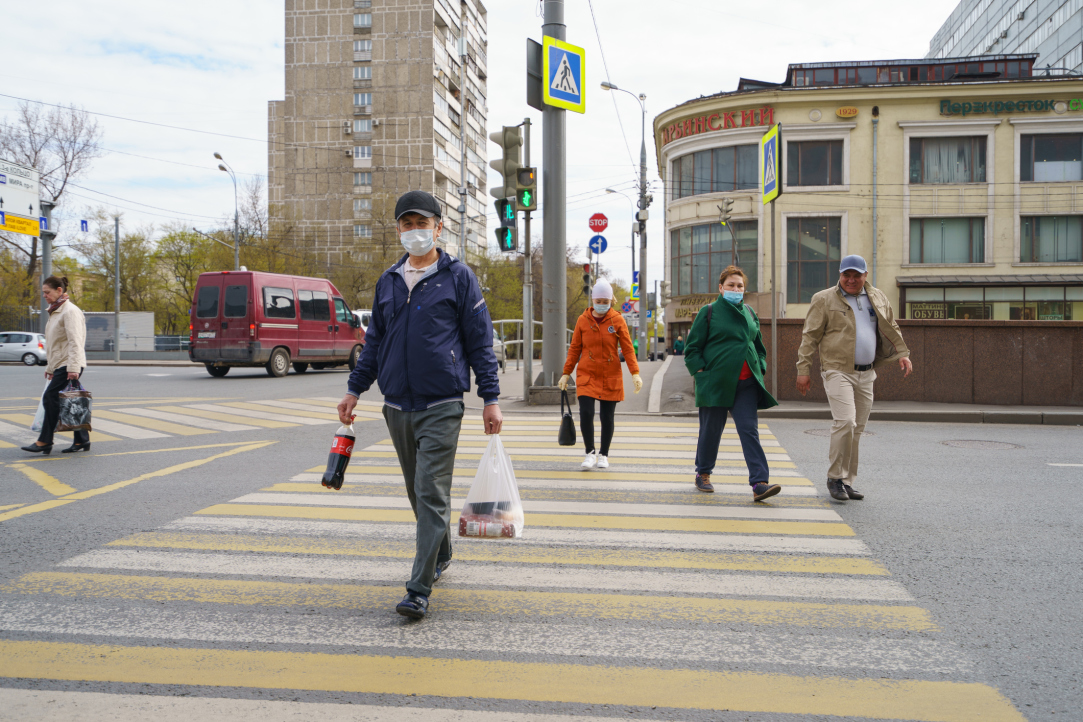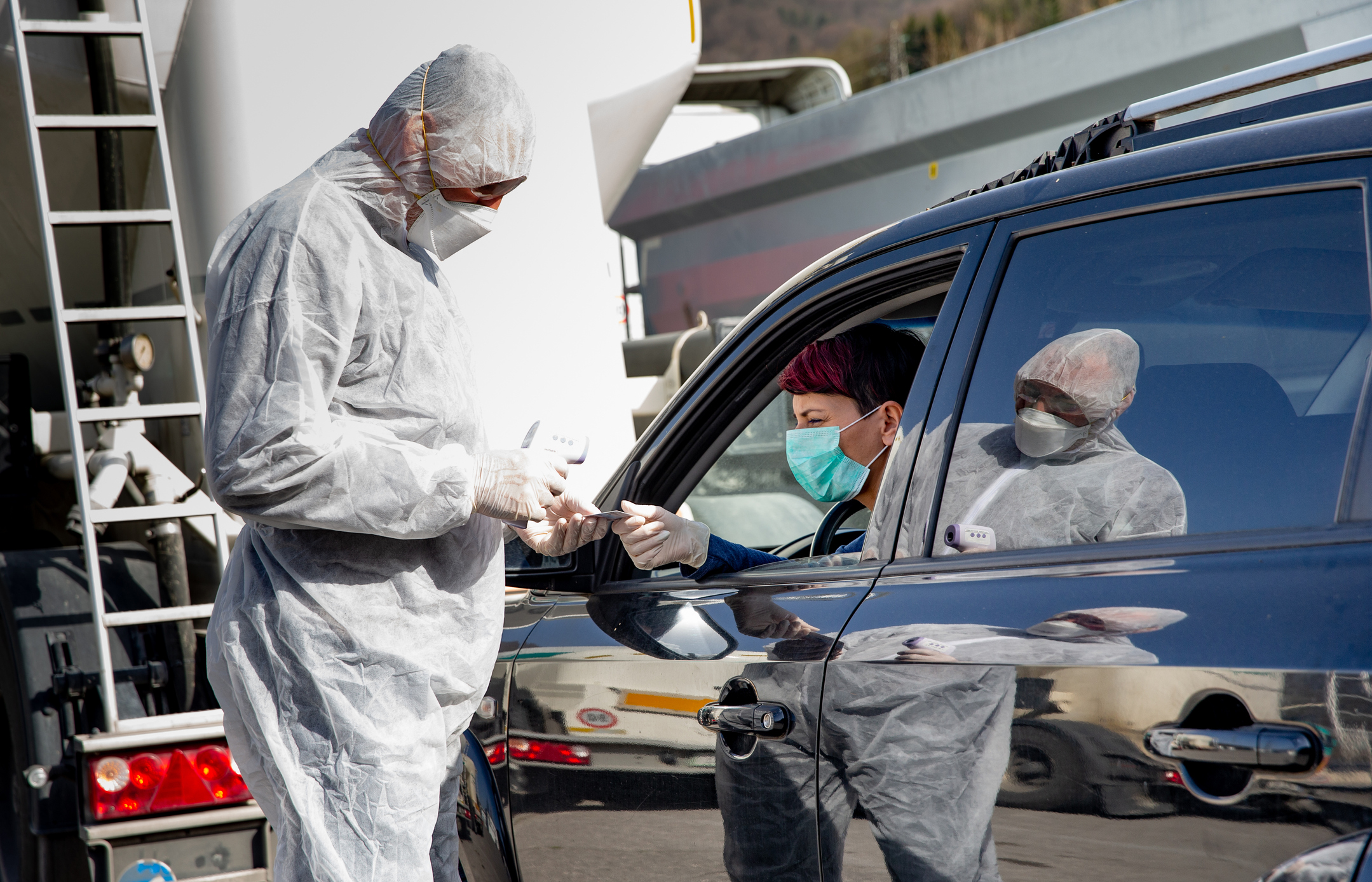State and Civic Efforts Helped Save at Least 80,000 Lives in Russia During the Pandemic, HSE Experts Say

In a study, ‘How Many Deaths from COVID-19 Were Avoided by Russian Society’, experts from HSE University found that the restrictive measures taken by the Russian government and its citizens to combat the spread of the virus saved the lives of tens of thousands of Russians.
Experts at HSE University calculated the difference between the projected number of deaths (with and without restrictions) and the actual mortality rate between March 1 and June 24. The study takes into account official information on the number of coronavirus-caused deaths, as well as information on the deaths of people for whom COVID-19 was recorded as a concomitant cause of death.
The researchers used two methodological approaches: an estimation based on a logistic equation (the exponential increase in cases without governmental measures or changes in citizen behavior) and an epidemiological (SEIR) model with an adjusted reproduction index (R0) that accounts for changes in citizen behavior and preventive measures instituted by authorities.
The study shows that in contemporary society, three groups of factors can be distinguished that limit the spread of the disease and prevent mortality.
The first group of factors occurs directly at the level of society. The only role the government plays here is in promptly providing updated information to citizens, who then independently take preventive actions (such as self-isolating, minimizing their external contacts, abstaining from social, business and cultural activities that require them to interact with large groups of people, and adopting practices of increased personal hygiene). Employers also enact preventive measures, such as transferring employees to a remote work format, providing paid leave, furloughing employees, restricting office hours, sanitizing work spaces, monitoring the health of workers and/or customers, and suspending operations.

The second group of factors are linked with governmental policy. This includes instituting restrictions on business operations and the isolation of citizens, sanitary control, restrictions and prohibition of the movement of people, economic support for enterprises and citizens, stimulation of production, direct ordering of sanitary goods and services to ensure their availability, and the organization of necessary import purchases. The goal is to ensure that citizens and organizations are able to comply with restrictive regulations.
Finally, the third group of factors is connected with measures taken by the medical industry to diagnose and treat patients and identify as well as isolate those who have come into contact with carriers of the disease.
According to their model, HSE experts say, if the government and citizens had completely ignored the outbreak and not taken any measures to prevent the spread of the disease (which would have led to an exponential increase in cases), the number of additional deaths during the analyzed period could have reached 3.8 million. Their calculations also drew upon results of a study published in Nature (Hsiang S., et al., ‘The Effect of Large-Scale Anti-Contagion Policies on the COVID-19 Pandemic’, Nature, May 26, 2020). The study by Hsiang, et al. shows that for six countries (China, South Korea, Italy, Iran, France, and the United States), anti-contagion measures helped prevent 62 million cases of COVID-19.
According to the HSE researchers, an epidemiological SEIR model with an adjusted reproduction index (R0) that takes into account changes in the behavior of authorities and citizens is more realistic. Calculations using this methodology showed that measures taken by the government—i.e., measures related to sanitation, medicine, the economy, and prompt communication with citizens—as well as citizen behavior, such as social distancing, self-isolation, using personal protective equipment, and measures taken by employers, such as transferring workers to remote work, testing workers, and providing workers with protective equipment, collectively helped save the lives of at least 80,000 Russians.
According to study co-author Andrey Zhulin, HSE Vice Rector and Director of the HSE Office for Expert Analysis, modern society is a complex self-organizing organism, in which most people are well educated and able to quickly learn and adapt to new circumstances. The timely receipt of information about the threat allows society to promptly put protective mechanisms in place.
‘Saved lives are the result of regulatory measures by the authorities and responsible citizen behavior,’ says Andrey Zhulin. ‘And it is impossible to reliably separate these effects.’
The authors of the HSE study noted that their estimates are preliminary and emphasized that they were obtained with current data, which is limited. The researchers will continue to further develop and refine the results.
Study authors: Evgeny Andreev, Head, International Laboratory for Population and Health, HSE University; Vasily Vlasov, Professor, Faculty of Social Sciences, HSE University; Andrey Zhulin, HSE Vice Rector, Director, Office for Expert Analysis, HSE University; Marcel Salikhov, Research Fellow, Faculty of World Economy and International Affairs, HSE University; Sergey Shishkin, Professor, Director of the Centre for Health Policy, Head of the Programme in Health Care Administration and Economics, HSE University.
See also:
HSE Biologists Explain Mechanism behind Coronavirus Evolution
A team of researchers, including scientists of the HSE Faculty of Biology and Biotechnology, have analysed the evolutionary path of the coronavirus from the Wuhan variant to Omicron. Their findings indicate that many genomic mutations in SARS-CoV-2 are shaped by processes occurring in the intestines and lungs, where the virus acquires the ability to evade the inhibitory effects of microRNA molecules. The study findings have been published in the Journal of Medical Virology.
Russian Researchers Explain Origins of Dangerous Coronavirus Variants
HSE researchers, in collaboration with their colleagues from Skoltech and the Central Research Institute for Epidemiology, have uncovered the mechanisms behind the emergence of new and dangerous coronavirus variants, such as Alpha, Delta, Omicron, and others. They have discovered that the likelihood of a substitution occurring at a specific site of the SARS-CoV-2 genome is dependent on concordant substitutions occurring at other sites. This explains why new and more contagious variants of the virus can emerge unexpectedly and differ significantly from those that were previously circulating. The study’s findings have been published in eLife.
HSE Biologists Prepare Strategy for Universal COVID Test
Russian researchers have developed a strategy to create a cheap and rapid COVID-19 test based on isothermal amplification. According to their publication in Applied Biochemistry and Microbiology, use of this strategy will make it possible to create universal test systems for any of the COVID-19 variants.
People’s Values Affect Their Attitudes to COVID-19 Restrictions
HSE social and political analysts have established which value models and circumstances promote support for restrictive government policies aimed at combatting the coronavirus pandemic. The research is published in Plos One.
Model of Predator-Prey Relationship Helps Predict Spread of COVID-19
Researchers from the HSE Faculty of Economic Sciences have proposed a mathematical model that describes the course of the COVID-19 pandemic, taking into account the restrictions applied in different countries. The model will help governments make reasonable and timely decisions on introducing or lifting restrictions. The paper was published in Eurasian Economic Review.
Ageing and Frailty: International Study and Seminar
In October, a two-day seminar entitled ‘Ageing and frailty in Norway and Russia’ was held by HSE University’s International Laboratory for Population and Health. In addition to purely demographic results concerning the changing age structure of the population and growing life expectancy, most presentations were devoted to the comparative assessment of physical and cognitive status among elderly people, cardiovascular aging, as well as social and medical support for the elderly. We spoke with the organizers and participants of the seminar about their research findings and the implications for society and public health.
HSE University Classes to Be Held On Site for All Students
Classes in the new academic year will take place on site for students of all HSE University campuses. Existing COVID safety precautions will remain in effect.
Russian Scientists Investigate the Immune Response to SARS-CoV-2 Variants
HSE University researchers assessed the effectiveness of the T-cell immune response to 11 variants of SARS-CoV-2. Their findings have been published in Nucleic Acids Research.
First-year Students Will Be Able to Get COVID Shots at HSE University
The new regulations ‘On the Organization of Studies for the 2021/2022 Academic Year’ feature in detail what will change for first-year students in the new academic year. HSE University will be organizing a vaccination drive in September for students aged 18 and over who are unvaccinated. Younger students will be eligible for vaccination once they turn 18.
New Safety Measures to Be Introduced at HSE University
Starting September 1, 2021, HSE University-Moscow is introducing new safety policies on campus to prevent the spread of COVID-19. They apply to students over 18 years old who have not had COVID during the last six months, have not been vaccinated (with a Russian or a foreign vaccine), nor have a medical exemption from vaccination. Free vaccination will be available on campus to all arriving students.


